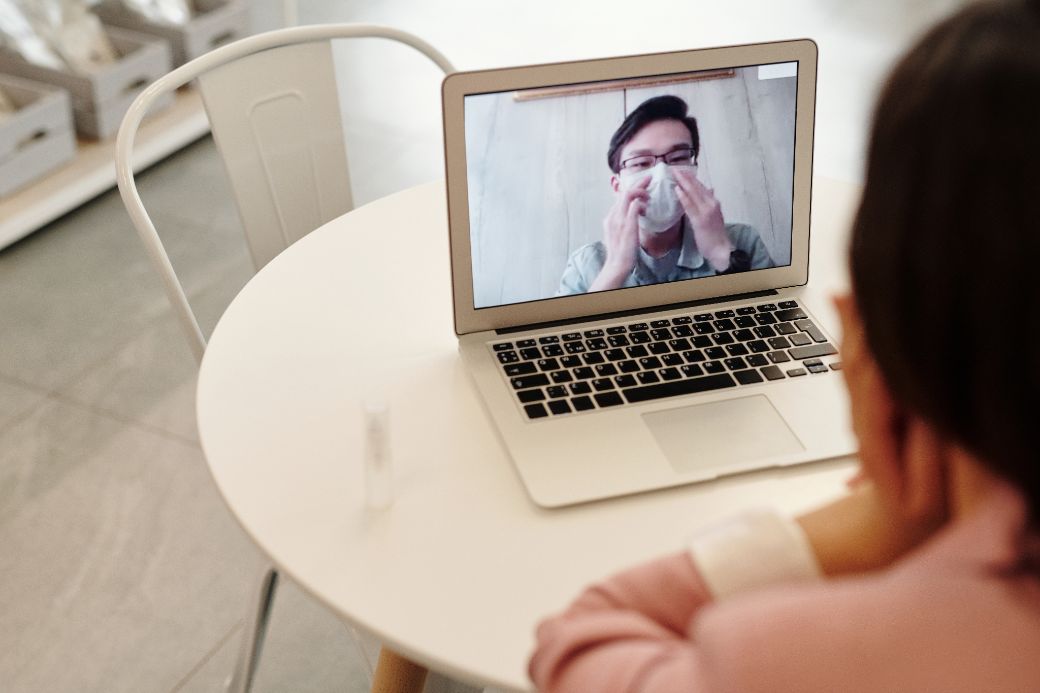During the COVID-19 crisis, telehealth services have empowered healthcare providers with the tools to treat patients remotely, protecting both parties from unnecessary exposure.
McKinsey research demonstrates just how popular telehealth has become since the pandemic started to transform daily life in the first quarter of 2020:
- Just 11 percent of consumers expressed interest in using telehealth when questioned in 2019, but this had leapt to 76 percent at the time of writing
- More than 55 percent of healthcare providers view telehealth more favorably than they did before the pandemic
- 64 percent of healthcare providers feel more comfortable offering telehealth services to patients
It’s not hard to understand the patients’ and healthcare providers’ shift in perspective. Visiting a doctor’s office for a face-to-face chat and a hands-on examination is just one of the many aspects of daily life people took for granted before COVID-19 triggered colossal changes. People with ongoing health conditions may have relied on regular visits for years, only to find themselves unable to access these same services with little to no warning.
Fortunately, telehealth bridges the enforced gap between healthcare providers and their patients in a number of key ways. But how? And what does the future hold for telehealth, even when the fear of COVID-19 passes and physical consultations can resume safely?
How telehealth services have helped during the pandemic crisis
Telehealth is a broad term, encompassing various aspects of remote care. For example, it may include something as simple as calling your local doctor’s office for an informal chat about exercising safely or uploading data from a wearable device (such as for monitoring cardiovascular activity over a fixed period).

Innovative telehealth technologies include digital otoscopes and stethoscopes, but for most consumers, telehealth refers to the process of interacting with a care-giver online.
This offers a number of remarkable benefits, for patients and physicians alike.
Maintaining safety without compromising on care
First and foremost, safety is the biggest advantage in the age of COVID-19. In many cases, patients need not place themselves, their healthcare providers, or their household in undue danger by traveling to a local practice for a conventional face-to-face consultation.
For non-drivers, commuting via bus or train would carry a risk of exposure to the coronavirus, as would actually being in an enclosed space with other people. The risk alone may prove unsettling enough to put patients off of seeking help.
Indeed, research by the CDC shows that some people may be delaying emergency care during the pandemic, as visits to emergency departments decreased 42 percent from the same period of the previous year.
That’s obviously a major concern. Anyone requiring urgent attention could be putting themselves and potentially others at risk by avoiding treatment due to the coronavirus. And, of course, someone who suffers a severe injury will struggle to find the emergency care they need through a remote consultation.
However, telehealth services ensure communities can still receive essential advice, guidance, and reassurance from healthcare providers they trust in non-urgent situations. There’s no need to plan a journey, wear a mask or practice proper social distancing by visiting a practice in person: patients can simply hop onto their desktop or laptop computer and receive the care they need.
A more convenient, hassle-free way to seek medical attention
Another key benefit of telehealth during COVID-19 and beyond is the unprecedented convenience it offers: individuals with mobility or mental health issues can access care without needing to leave their home.

This ties into the aforementioned benefit closely, but it’s less about reducing the risk of contracting COVID-19 and more about catering to diverse patient needs.
For example, a patient living with severe agoraphobia would be reluctant to travel to their local practice for a routine consultation. Finding the strength to step outside can, in some cases, be incredibly difficult and stressful for people with this or similar conditions. Their anxiety may be enough to make them skip an appointment altogether.
Likewise, an infirm patient who relies on others to help them leave their house and get around may struggle to visit a physician safely. It’s an inconvenience, to say the least.
And let’s not forget individuals who live in rural areas, miles from the nearest practice or clinic. Driving into a local town or city can be time-consuming and mean being surrounded by hundreds or thousands of other people. Again, they may choose to forego medical attention altogether if they feel their complaint doesn’t warrant an immediate examination — though only a qualified healthcare provider will be able to make this decision safely. Reluctant patients may be putting themselves in danger by choosing to avoid visiting a professional.

But telehealth is an ideal solution in any of these situations. Patients can access professional healthcare from their own home at their own convenience, eliminating the difficulties involved with traveling to a practice or clinic in person.
Creating jobs during an uncertain time
One of the most disturbing aspects of the pandemic is the sheer number of people losing their jobs worldwide.
According to the U.S. Labor Department, more than 30 million workers were let go during the spring alone, though many more employers have terminated contracts since. It’s a challenging time for all of us, but especially for those trying to stay safe and healthy without a stable income to rely on.
As restaurants, bars, and other local businesses continue to reopen, workers will be in demand again. However, telehealth is one unexpected area which has led to the creation of numerous jobs during the pandemic, due to patients’ increased demand for fast, convenient remote healthcare.
The rapid growth in telehealth adoption has created more opportunities for individuals with healthcare experience or qualifications, as well as IT experts. Telehealth relies on the latest technology and software to run effectively, and practice staff may be unable to operate remote-care systems independently. Having access to specialists ready to offer hands-on or remote guidance can prevent delayed or even missed appointments.

Practices may also hire more staff solely to handle telehealth interactions, as people start to return for in-person consultations with physicians and nurses. This enables teams to accommodate growing demand more efficiently, without needing to decide whether to prioritize patients requiring assistance in person or remotely.
And, if telehealth is here to stay, those jobs which have been created during recent months will likely remain necessary in the future.
Which medical fields use telehealth?
Telehealth may prove more advantageous to some healthcare businesses than others in the long run, though it still offers significant benefits to all.
The following fields, in particular, can put telehealth to effective use:
Pediatrics
Research shows that telehealth services are incredibly helpful in the field of pediatrics, reducing the number of missed appointments, boosting adherence to therapies recommended by professionals, and providing a higher standard of healthcare to children based in rural communities (where families may lack convenient access to traditional healthcare).
Another obvious benefit is that children may be frightened to visit a physician and feel uncomfortable in an unfamiliar environment. This can create problems for parents and the healthcare providers alike: the child may be unmanageable, leaving the physician or nurse unable to examine them properly, especially during a tight appointment window on a busy day.
Said child may need to return at a later date, leading to wasted time for everyone involved.
But with telehealth (and videoconferencing especially), the child gets to remain in their own home during an interaction. This could reduce the risk of them becoming agitated and difficult to examine, offering greater accuracy and better use of the time available. Parents may also find discussing issues easier while the child is entertained by their own toys, books, etc.
Mental health
We’ve already touched on the benefits telehealth offers to patients living with mental health conditions, such as social anxiety, depression, etc., but there’s more to it.

The most obvious and immediate advantage is that individuals struggling to venture outdoors or be among strangers can stay in their own home while still interacting with a healthcare professional. There’s no danger of missing out on the necessary care or a prescription.
More so, though, telehealth services accommodate patients with mental health conditions living in remote areas perfectly. They may lack convenient access to the facilities their situation demands, and travel to a better-equipped clinic or hospital could be out of the question. But, thanks to telehealth, they can consult the right medical professionals as required.
And if they are asked to visit a location further away, outside their comfort zone? Their physician can help to prepare them and talk them through the process, to reduce any anxiety or stress the situation might cause.
OB/GYN
Telehealth can benefit pregnant women and those experiencing gynecological issues. Visiting a doctor or a hospital can be difficult when heavily pregnant or feeling self-conscious about a personal problem. And, during the pandemic, women carrying a child at any stage in their pregnancy will be reluctant to visit a practice or clinic where they’re sure to be among strangers — some of whom may be carrying the coronavirus.

Fortunately, telehealth services empower OB/GYN specialists with the tools to interact with patients remotely, especially when dealing with such issues as hypertension or gestational diabetes.
Healthcare providers can also use telehealth technologies to deliver test results, offer advice, alleviate concerns, and generally keep expectant mothers calm without needing to bring them into the office.
Women with gynecological issues may still be examined and discuss their symptoms with a trusted physician or nurse in detail via audio or video calls. They can then determine if a physical examination is necessary.
Dentistry
Dentists can leverage telehealth to conduct remote examinations of patients’ oral health and to offer advice on caring for teeth. Obviously, given the nature of dentistry, it may be difficult to perform thorough assessments of patients’ mouths virtually, yet minor issues can be dealt with easily.
Telehealth can also benefit the following healthcare fields in similar ways:
- Optometrists
- Chiropractors
- Veterinarians
The future of telehealth after the pandemic
As McKinsey’s research shows, COVID-19 has increased general interest in telehealth among patients and healthcare providers. While some conditions demand physical examination and hands-on treatment, telehealth offers a simple, fast, and convenient way to screen patients before deciding on further action.

Practices can implement telehealth for initial consultations between a patient and physician in non-urgent cases. This affords individuals an opportunity to show and/or discuss concerns, without requiring them to visit the office in person.
In cases where the complaint turns out to be nothing unusual or requiring immediate attention, no face-to-face appointment may be necessary at all. This prevents patients and healthcare providers alike wasting time and money.
Furthermore, with waiting to be seen considered the most stressful part of visiting a doctor, telehealth platforms (such as UPbook Telemedicine) offer patients an irresistible solution. The only room patients are required to wait in is virtual — they can remain in their living room, their kitchen, or even their bedroom while their doctor deals with patients ahead of them.
The doctor can view those patients waiting to be seen and initiate interactions with a click or two, using video or audio only (depending on the level of privacy required).
By embracing telehealth services, medical professionals across diverse fields can increase the number of patients they interact with and keep appointment lengths balanced. This can reduce the amount of time patients waste waiting to be seen, and facilitate a practice’s growth — the more people a team helps, the more revenue they can generate over time.
And in the case of free telehealth software, healthcare businesses can adopt cutting-edge technologies without the expense incurred by paid alternatives.
The ongoing rise of telehealth services offers a wealth of benefits to patients and healthcare providers, when the technology is used wisely. It’s vital that advice, information, and guidance is available to patients whenever telehealth is made available, to ensure they understand how the technologies can benefit them.
Likewise, adequate training should be provided to practice team-members, to make sure the technology is used to its full potential.
To learn more about UPbook Telemedicine and how it can benefit your practice, try our innovative software now.
Essential Soft Skills for Front Desk Staff Members
How to Create a 5 Star Front Desk? Ultimate Practice Growth Formula


